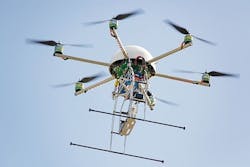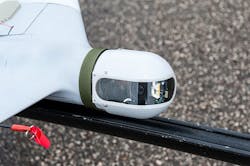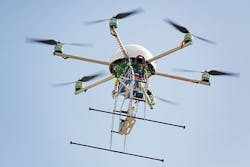Companies focus on shrinking, cooling EO/IR systems for aerospace, especially UAS
MOUNTAIN VIEW, Calif., 21 Jan. 2016. Increased use of electro-optical/infrared (EO/IR) systems in manned and unmanned aircraft, as well as vehicles on land and sea, for intelligence, surveillance, and reconnaissance (ISR) and other missions is driving technology developers to design miniaturized EO/IR payloads offering sufficient heat dissipation and meeting industry standards, without compromising on performance.
“Enhancements in cost-effective cooling techniques will enable industry participants to lower the price of cooled thermal imaging cameras, which will encourage the proliferation of EO/IR systems in the military and aerospace sectors,” says TechVision Research Analyst Jabez Mendelson. “Thermal imaging sensors are expected to greatly influence target detection and surveillance systems.”
“Due to the use of appropriate materials to develop key enabling technologies, there are plenty of opportunities for the expanded applications of EO/IR sensors in the aerospace industry, including in unmanned aerial vehicles,” Mendelson adds. “Cost reductions in advanced IR detectors and improvements in the resolution of low-end IR microbolometers will widen the application scope of EOIR sensors to include gas detection, pollution monitoring and thermal imaging in handheld electronic devices.”
Technology developers are working on improving the resolution and range of inexpensive IR microbolometers, while reducing the cost of high-performing cooled IR detectors, according to Frost & Sullivan analysts studying electro-optical/infrared systems - technology trends impacting military and aerospace sectors (http://bit.ly/1VooRck).
The materials used in the development of detectors for thermal imaging cameras in EO systems play a critical role in the performance of the sensors. The chemical composition of these materials influences the sensitivity of the sensors in EO/IR systems and defines the spectral bands of the cooled and uncooled detectors in the EO/IR systems.
The U.S. expects to lead the global military and aerospace market in the development of next-generation EO/IR systems, followed by the European Union. Asia-Pacific, on the other hand, is likely to be the fastest adopter of these systems.
“Electro-Optical/Infrared Systems - Technology Trends Impacting Military and Aerospace Sectors,” a part of the TechVision (www.frost.com/techvision) subscription, offers a detailed account of EO/IR systems from various technology and market dimensions. The research covers the technology landscape, an assessment of EO/IR applications, key enabling technologies, global trends and innovation indicators, the breadth of application segments impacted, strategic insights, as well as technology and application roadmaps indicating the prospects of EO/IR technology.
Frost & Sullivan's global TechVision practice is focused on innovation, disruption, and convergence and provides a variety of technology based alerts, newsletters and research services as well as growth consulting services.
Unmanned aircraft images courtesy Shutterstock.
You might also like:
Subscribe today to receive all the latest aerospace technology and engineering news, delivered directly to your e-mail inbox twice a week (Tuesdays and Thursdays). Sign upfor your free subscription to the Intelligent Inbox e-newsletter at http://www.intelligent-aerospace.com/subscribe.html.
Connect with Intelligent Aerospace on social media: Twitter (@IntelligentAero), LinkedIn,Google+, and Instagram.



